Chinese anti-aircraft artillery of the Cold War era
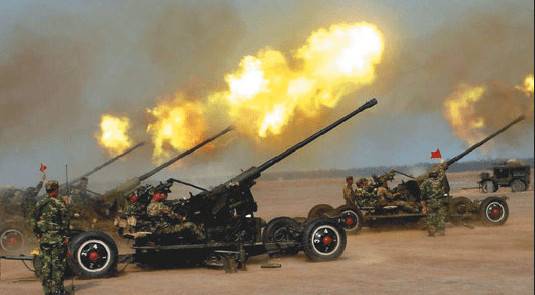
During the Korean War, the combat capability of the Chinese units providing air defense for ground forces in the front line and rear facilities was completely dependent on Soviet supplies. The Soviet Union donated anti-aircraft machine-gun and artillery installations, ammunition for them, searchlights and radar stations free of charge. Soviet military advisers prepared the calculations, taught how to properly manage the actions of the existing air defense squad. In the military educational institutions of the USSR, thousands of Chinese were trained, who later formed the backbone of the officer corps of the PLA's air defense forces.
Soon after the cessation of hostilities in Korea, licensed production of Soviet anti-aircraft guns began at Chinese enterprises built with the help of the USSR. These were samples that Chinese specialists could get acquainted with during the Korean War, as well as new developments.
37-mm anti-aircraft installations
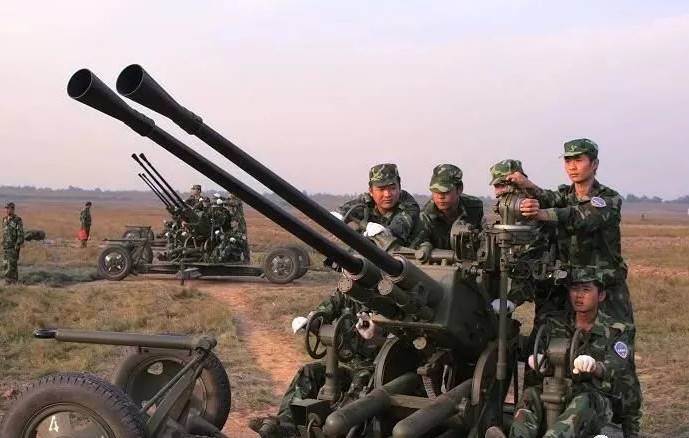
Along with the 12,7-mm DShK and DShKM machine guns, the main means of dealing with enemy aircraft operating at low altitudes, which were at the disposal of Chinese people's volunteers during the war in Korea, were 37-mm anti-aircraft guns of the 1939 model (61-K).
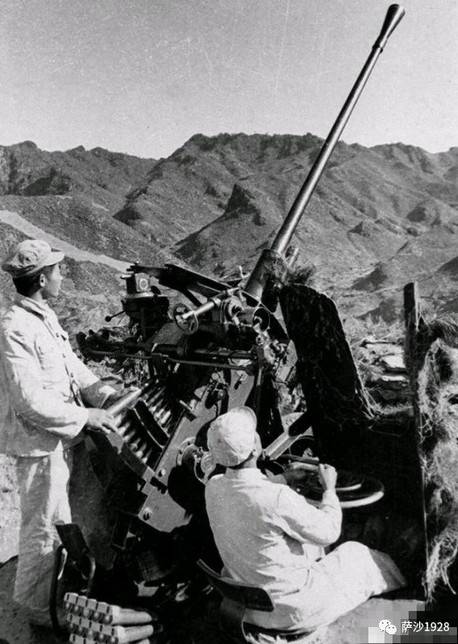
Calculation of a 37-mm anti-aircraft gun at a firing position
In 1955, the PLA entered service with the Type 55 anti-aircraft gun. Serial production of the 37-mm anti-aircraft gun of the 1939 model under a Soviet license was established at two enterprises.
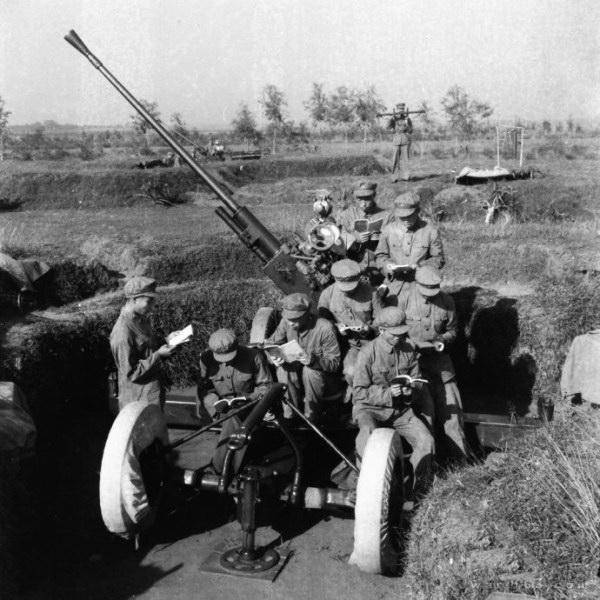
The Type 55 anti-aircraft guns were in production until the second half of the 1960s. Their active use in the PLA continued until the late 1980s. As in the case of the 14,5 mm quadruple machine gun mounts, they were handed over to the reservists towards the end of their careers.
In 1965, the production of the 37-mm Type 65 installation began. The Chinese twin anti-aircraft gun had much in common with the Soviet B-47, in which two blocks of barrels of the 37-mm 61-K assault rifle were combined on one gun carriage. Thanks to this solution, it was possible to significantly increase the practical rate of fire and the likelihood of hitting the target.
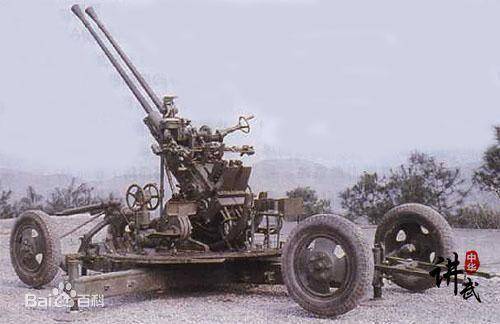
37-mm twin anti-aircraft gun Type 65
The mass of the Type 65 anti-aircraft gun in the stowed position was 2 650 kg, in the combat position - 2 550 kg. Rate of fire: 320-360 rds / min. Calculation - 7 people. The range and reach in height remained at the level of the Type 55. However, due to the general decline in industrial production in the PRC caused by the "cultural revolution", it was possible to produce a little more than 200 twin Type 65 anti-aircraft guns.
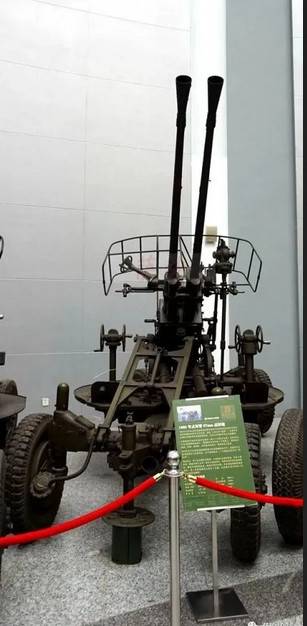
37-mm twin anti-aircraft gun Type 65 at the Nanjing Museum of Science and Technology
It is reliably known that single-barreled and paired Chinese-made installations, along with similar anti-aircraft guns supplied by the Soviet Union, took an active part in repelling American raids. aviation in vietnam.
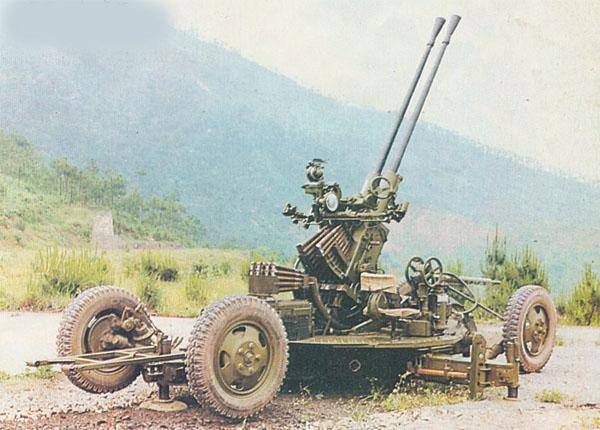
At the end of the 1960s in the PRC on the basis of tank T-34 produced a small number of self-propelled anti-aircraft guns, armed with paired 37-mm machine guns. Although these ZSUs were very few in number, several units were transferred to North Vietnam.
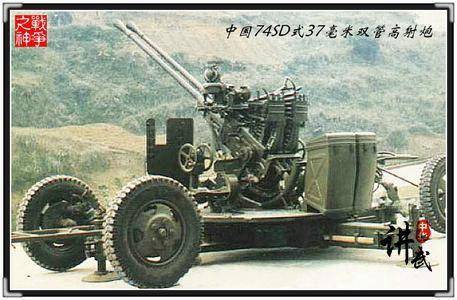
37-mm twin anti-aircraft gun Type 74
The installation was created on the basis of Type 65 and differs from it in the ability to work in automatic mode, when calculations are performed only for loading. Guidance and firing are performed from the anti-aircraft fire control device. For this, the anti-aircraft gun is equipped with remotely controlled electric servo drives and electromechanical actuators. A towed diesel generator is attached for power supply. Compact petrol generators can also be used.
The battery includes six twin Type 74 anti-aircraft guns, connected to the central gun guidance station by cable lines. All implements are located at a distance of no more than 50 m from the cable junction box.
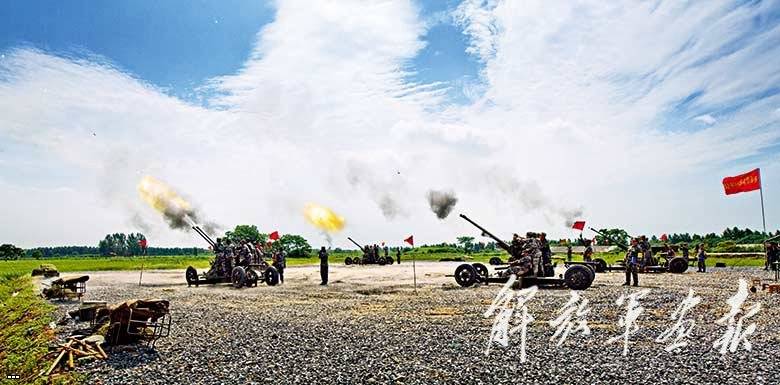
According to Chinese sources, when using automatic remote control and information on target parameters obtained from the radar, compared with manually entering data into an anti-aircraft sight, the probability of hitting a target is about a third higher.
The deeply modernized 37-mm Type 74 anti-aircraft guns in the second half of the 1980s replaced the Type 55 and Type 65 installations in the first line units. An independent tactical unit is the anti-aircraft artillery battalion, which included three batteries. Each anti-aircraft brigade consisted of three divisions. Currently, Type 74 installations are still in the PLA reserve formations and in warehouses.
In mid-1986, the PGZ 88 self-propelled anti-aircraft gun, built on the basis of the Type 79 tank, was presented for testing. The main armament of the ZSU consisted of a twin 37-mm Type 76 automatic installation used on Chinese warships. Ammunition - 500 rounds. Rate of fire - 360 rds / min. The maximum range for air targets is 3 m.
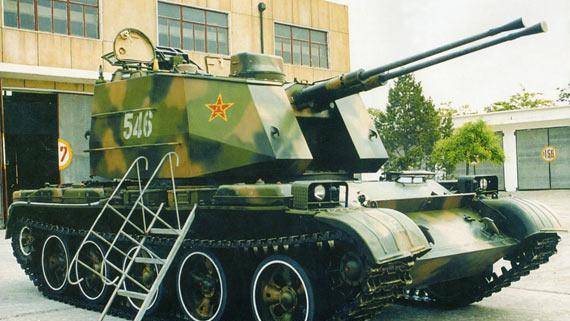
ZSU PGZ 88
A car weighing 35 tons could reach a speed of 50 km / h on the highway. The crew is four people.
To detect air targets, a radar with a detection range of 8-10 km was used. After detection, the target was to be taken for accompaniment with an optoelectronic sighting system. In case of electronics failure, there was an optical sight.
The refinement of the search and sighting equipment went with great difficulties, and although in 1989 the PGZ 88 ZSU officially entered service, only 24 self-propelled guns were produced. The Chinese military was not satisfied with the poor operational reliability of the electronics, the low ability to search and fire at targets in the dark, as well as the low probability of defeat by the standards of the late 1980s. Currently, all ZSU PGZ 88 have been removed from service.
57-mm anti-aircraft installations
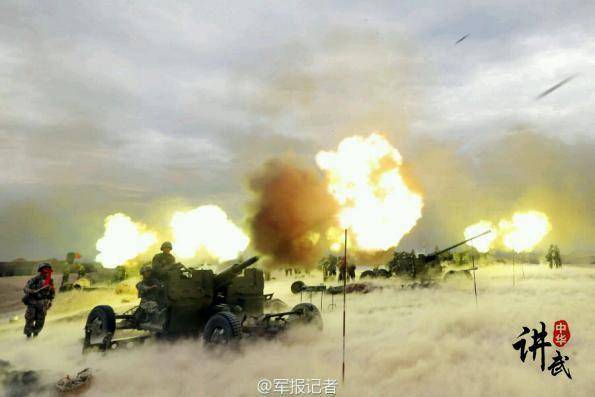
At the final stage of the Korean War, Soviet anti-aircraft units stationed in the DPRK were armed with 57-mm S-60 automatic anti-aircraft guns. The appearance of this gun was due to the fact that during the Second World War for the anti-aircraft guns in service with the Red Army there is a "difficult" range of heights: from 1 m to 500. , and for 3-000-mm guns, this height was too low. In order to solve the problem, it seemed natural to create a rapid-fire anti-aircraft gun of some intermediate caliber. In this regard, the development of a 25-mm gun was started, which was put into service in 37.
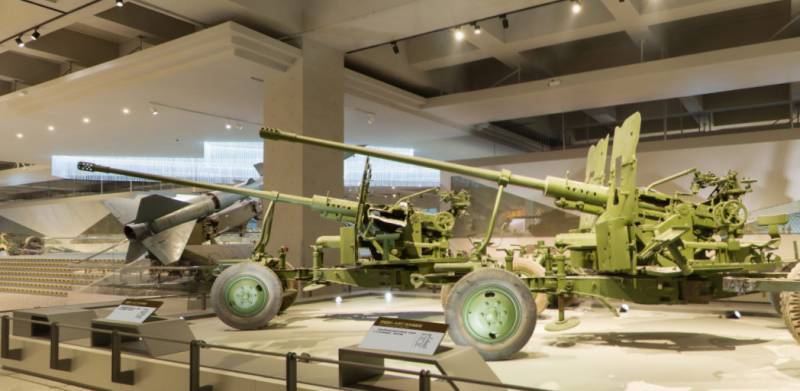
57mm anti-aircraft guns at the War Museum of the Chinese Revolution
The 57-mm S-60 anti-aircraft gun in the combat position weighed 4 kg. Rate of fire - 800 rds / min. The initial velocity of the projectile is 70 m / s. Projectile weight - 1 kg. Reach in range - 000 m, in height - 2,8 m. Calculation - 6 people.
The battery set of tracking drives was intended for guidance in azimuth and elevation of up to eight guns. When firing, PUAZO-6-60 and the SON-9 gun aiming radar were used, and later the RPK-1 Vaza radar instrument complex.
Based on the results of combat use in Korea, the S-60 gun was modernized, after which it was mass-produced until 1957. Despite the deterioration in Soviet-Chinese relations, the license for the production of the S-60 was transferred to the PRC in 1957. The mass production of 57 mm guns under the designation Type 57 began in 1965. RPK-1 "Vaza" was not supplied to China.
Unlike heavy machine guns and 37, 85, 100 mm anti-aircraft guns, China did not send automatic 57 mm guns to Vietnam. Which indicates that in the late 1960s and early 1970s, there were not many of them in the PLA.
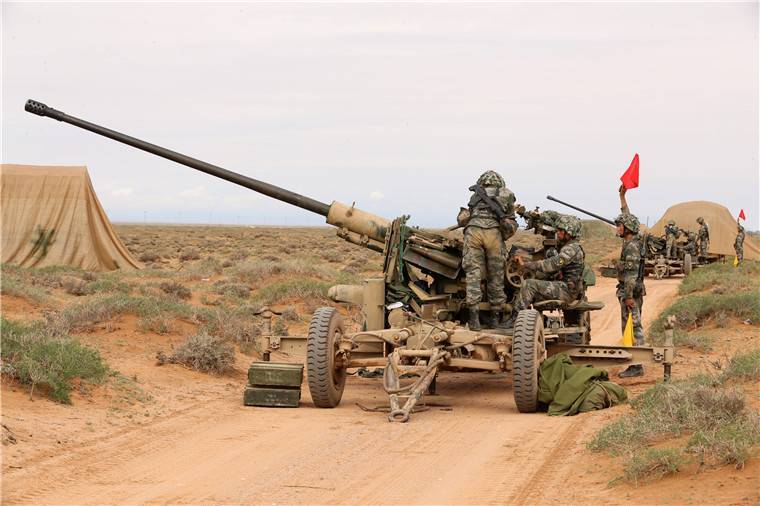
At the moment, as is the case with the paired 37-mm Type 74 anti-aircraft guns, a number of 57-mm Type 57 automatic cannons are in storage and in parts of the second line.
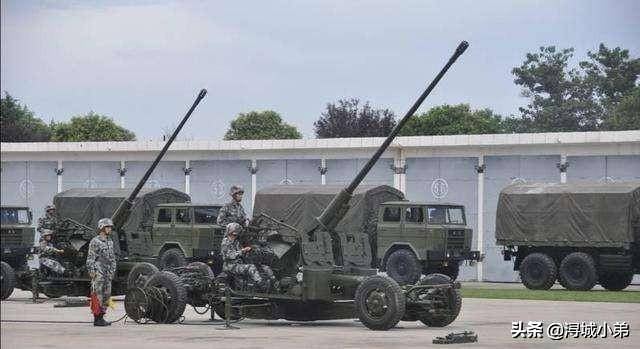
In 1982, China received several Soviet ZSU-57-2 from Iraq. Although this anti-aircraft self-propelled gun was outdated by that time, an attempt was made to copy it. The chassis of the Type 69II tank was used as a base. In 1986, the ZSU was introduced, which received the designation Type 80. In terms of its characteristics, it was close to the ZSU-57-2. An option was also created on the WZ 305 tracked chassis with a front-mounted MTO.
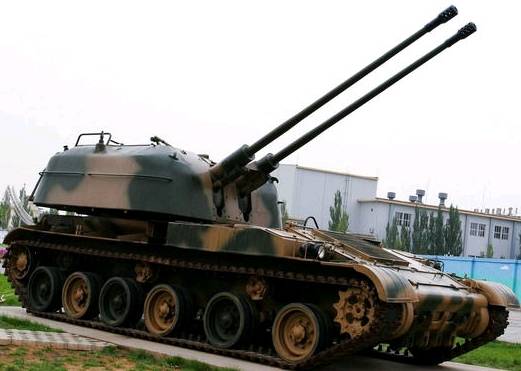
However, after the Chinese 57-mm ZSU entered testing, it became quite obvious that the anti-aircraft self-propelled gun with an open top tower, which does not have radar guidance and detection equipment, is hopelessly outdated and is not capable of effectively countering modern air attack weapons. The Chinese army leadership refused this machine, and foreign orders, despite increased advertising, did not follow.
85 mm anti-aircraft guns
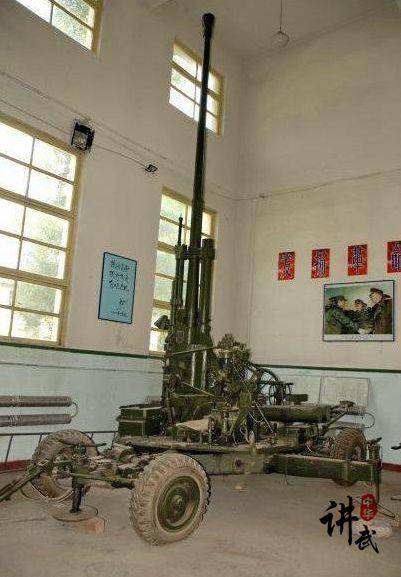
In the 1950s, the Soviet Union transferred about 1 500mm anti-aircraft guns to China.
By the second half of the 1960s, these guns were outdated and badly worn out. In this regard, it was decided on the basis of the 100-mm anti-aircraft gun KS-19 to create an improved sample, in which you can use the 85-mm shots produced in the PRC from the KS-12 mod. 1944 Subsequently, a projectile with a radar fuse was created for the new 85-mm anti-aircraft guns.
The "Cultural Revolution" slowed down the progress of work very much. The samples brought to an acceptable level of reliability were transferred for testing in 1973. However, due to the weakness of the production base, the release of the new 85-mm Type 72 anti-aircraft guns did not begin until 1978. Before production ceased in 1983, the Shanghai enterprise managed to deliver a little more than 200 guns.
The anti-aircraft battery, in which there were six 85-mm Type 72 guns, fired in normal mode according to the anti-aircraft fire control device coupled with a gun aiming radar and a stereoscopic rangefinder. The PUAZO created in the PRC could, in automatic mode, remotely aim in azimuth and elevation of the gun, equipped with electro-hydraulic guidance drives. In the event of equipment malfunction or damage to cables, guidance was carried out manually by calculation forces. There was the possibility of firing at ground and surface targets.
In the Type 72 cannon, which was actually a smaller analogue of the 100-mm Type 59 gun, the following operations were completely mechanized: setting the fuse, discharging the ammunition, closing the bolt, firing a shot, opening the bolt and extracting the spent cartridge case.
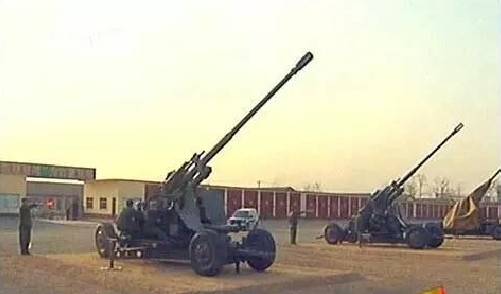
The mass of the Type 72 gun in the transport position was 6 kg. In combat - 300 kg. The mass of a fragmentation grenade with a remote fuse is 5 kg. Initial speed - 900 m / s. Rate of fire - up to 9,3 rds / min. The maximum firing range at air targets is 1 m. The reach in height is 000 m. The calculation of the gun is 35 people.
In its class, the Type 72 was a very advanced artillery system, but this weapon appeared too late. As the troops were saturated with modern air defense systems, the least worn out 85-mm anti-aircraft guns were transferred to the coastal defense. The active operation of the 85-mm Chinese anti-aircraft guns continued until the end of the 1990s. According to Chinese sources, at present all the KS-12 cannons have been decommissioned, and the Type 72 guns have been transferred to storage.
100 mm anti-aircraft guns
Shortly before the termination of military-technical cooperation, the USSR transferred to the PRC a license for the production of a 100-mm anti-aircraft gun KS-19M2. This gun was officially put into service in 1959 under the name Type 59. However, the first 100-mm anti-aircraft battery entered the army only in 1963. This was due to the fact that the Chinese industry could not master the production of anti-aircraft fire control devices for a long time.
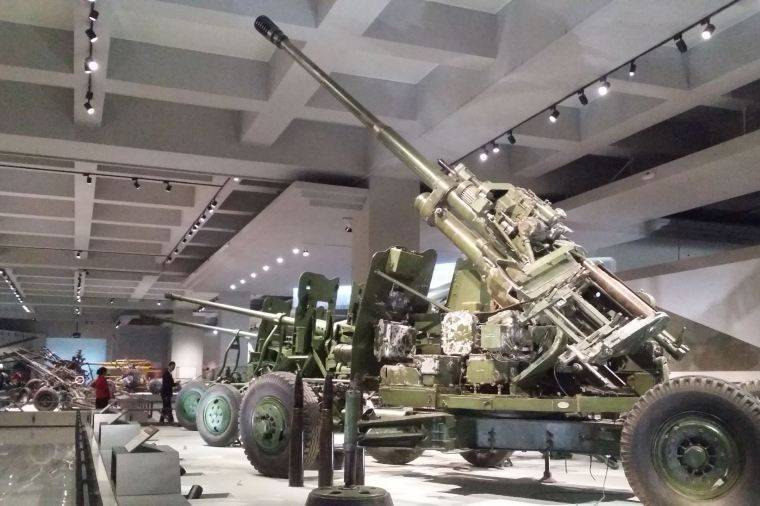
100-mm anti-aircraft gun Type 59 at the Military Museum of the Chinese Revolution
All elements of the complex in the combat position were connected with each other by electric cables. The anti-aircraft gun is guided to the anticipatory point by an electro-hydraulic drive from the PUAZO, but there was also the possibility of manual guidance. In a 100-mm anti-aircraft gun, the main operations are mechanized: setting the fuse, sending ammunition, closing the bolt, firing a shot, opening the bolt and extracting the sleeve. Power was supplied from towed diesel generators.
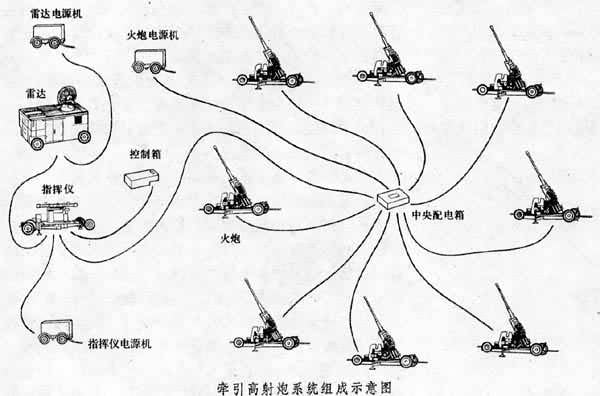
To control the battery fire, a Chinese copy of the Soviet SON-4 gun aiming radar was used, which was a two-axle towed van, on the roof of which there was a rotating parabolic antenna.
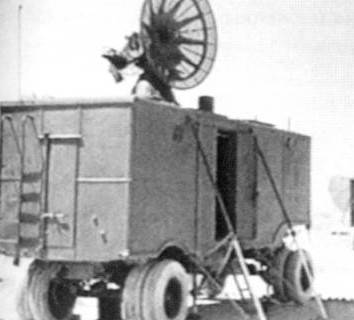
However, in the 1960s, it was not possible to ensure the regular release of radar guidance stations, and the anti-aircraft batteries at the first stage were equipped with only stereoscopic rangefinders. Also, great difficulties arose with the mass production of 100-mm fragmentation shells equipped with radar fuses.
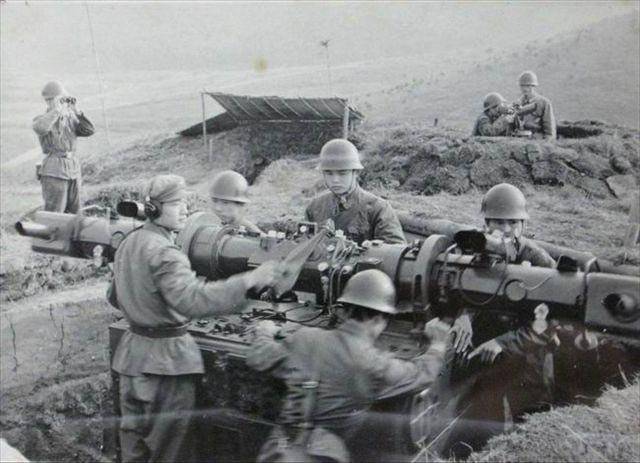
The mass of the gun in the stowed state is 9 550 kg. In combat - 9 450 kg. Projectile weight - 15,6 kg. Initial speed - 900 m / s. The 100-mm Type 59 anti-aircraft gun could fight air targets that had a speed of up to 1 km / h and flying at an altitude of up to 200 km. Rate of fire - 14 rounds / min. Calculation - 15 people.
After relations between the PRC and the USSR worsened, the top Chinese military-political leadership seriously feared a breakthrough by Soviet military aviation to important administrative and political centers.
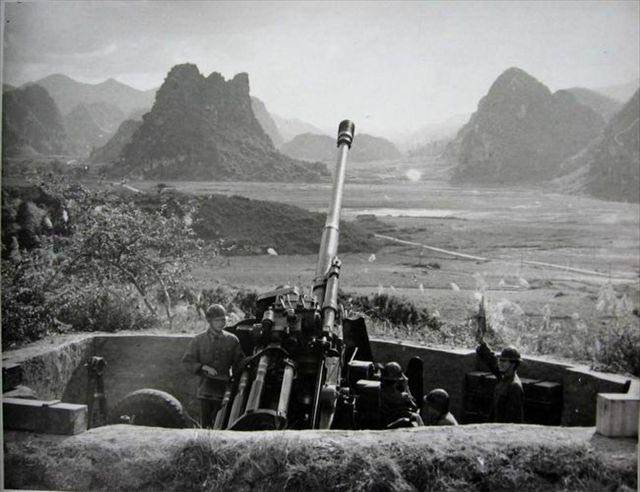
Many areas of the PRC were within the reach of Soviet front-line bombers, and batteries of 100-mm Type 59 anti-aircraft guns were stationary located in the directions of their possible breakthrough.
By the mid-1980s, as the PLA air defense forces were saturated with HQ-2 anti-aircraft missile systems (Chinese version of the S-75), the role of large-caliber anti-aircraft artillery decreased, and 100-mm anti-aircraft guns began to be transferred to coastal artillery and warehouses. However, after Operation Desert Storm, the views of the Chinese military on the possible role of anti-aircraft artillery in the conditions of air supremacy by a technologically superior enemy changed.
The Americans in Iraq managed to almost completely suppress the guidance channels of the S-75 medium-range air defense systems with interference, after which the Chinese military began to look for alternative ways to increase the combat stability of air defense systems.
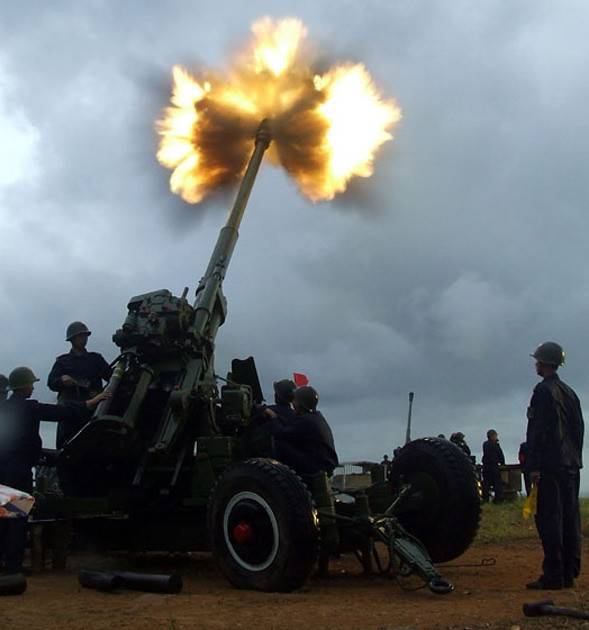
Instead of decommissioning, the existing 100-mm anti-aircraft guns, as well as controls, were overhauled and modernized. The upgraded gun was designated Type 59-1. Anti-aircraft 100-mm cannons were integrated with the short-range air defense system HQ-7B (created on the basis of the French Crotale air defense system). For early detection of air targets in mixed anti-aircraft missile and artillery brigades, the YLC-8B radar (produced on the basis of the Soviet P-12) and the YLC-6M low-altitude radar are used.
To control the fire of anti-aircraft guns, the battery was equipped with improved gun guidance radars with a detection range of up to 80 km and tracking up to 30 km, equipped with an additional optoelectronic channel and a laser rangefinder. Stereoscopic rangefinders are also used as a backup tool.
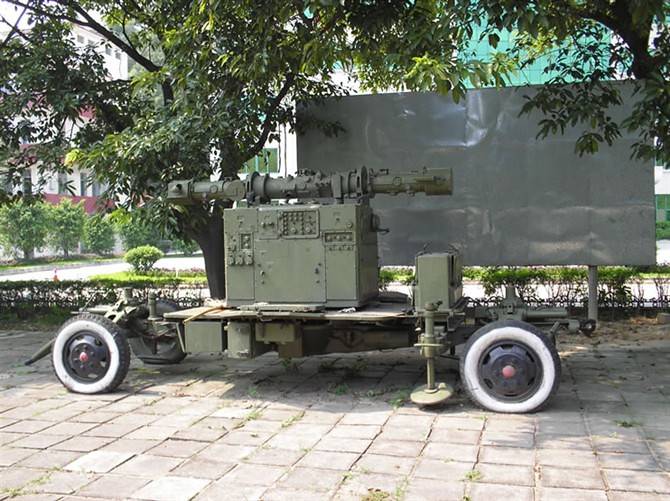
In 2019, the Chinese media reported that 100-mm Chinese anti-aircraft guns were to be decommissioned soon.
However, in 2021, after the armed conflict in Nagorno-Karabakh, it became known that on the basis of the obsolete Type 59 anti-aircraft gun, by introducing an adjustable projectile with a proximity fuse into the ammunition load and using new means of detection and target designation, it is planned to create a weapon capable of effectively combating drones.
23 and 25 mm anti-aircraft guns
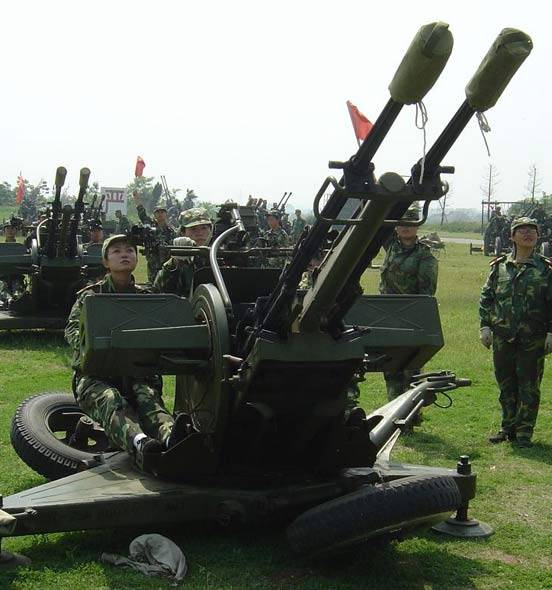
During the Vietnam War, the Soviet leadership, fearing that it weapon could get to China, did not supply the most modern air defense systems to the DRV. This applied to both anti-aircraft missile systems and artillery installations. Only at the very final stage of the war did the Vietnamese receive the ZSU-23-4 "Shilka" and the towed ZU-23.
Nevertheless, already at the end of the 1970s, work began in the PRC on the illegal copying of the 23-mm Soviet towed anti-aircraft gun ZU-23 for a 23x152 mm round. Prior to that, in the PRC there were no ground guns of this caliber, and the specified ammunition was not produced.
The 23-mm Type 85 anti-aircraft gun was put into service in 1986. In terms of its characteristics, it was generally identical to the Soviet ZU-23, but had a number of minor design and technological differences. The mass in the stowed state was 950 kg. Rate of fire - 1 600 rds / min. Practical rate of fire - 200 rds / min. The firing range at air targets is up to 2 m. The reach in height is 500 m.
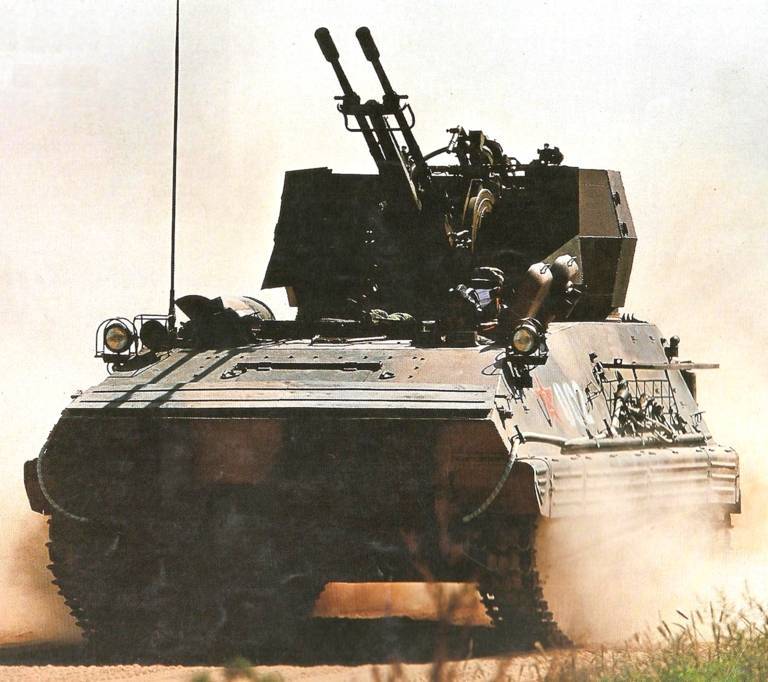
ZSU Type 63ARS
Using the Type 85 artillery unit, the Type 1980ARS ZSU was created in the late 63s. This vehicle was intended to provide air defense for motorized rifle and tank regiments.
After a short operation of 23-mm Type 85 installations, the Chinese military decided to use a more powerful 25x183 mm ammunition, which made it possible to increase the firing range and the power of action on the target.
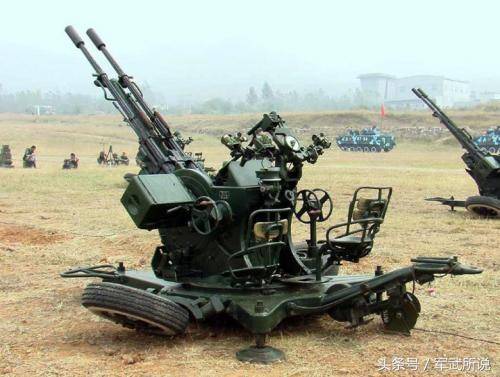
25-mm anti-aircraft artillery mount Type 87
In 1987, the PLA entered service with the 25-mm Type 87 installation, which was created on the basis of the 23-mm Type 85, differing from it in the caliber of the barrels, a more massive machine tool and recoil devices. The weight of the installation increased to 1 kg. Due to the increase in the size and mass of the shot, the capacity of the box magazines with the tape decreased from 520 to 50 shells. The range for air targets is 40 m. The rate of fire is 3-200 rds / min.
Towing 25-mm Type 87 anti-aircraft guns in the PLA is usually carried out by off-road vehicles. But sometimes they are installed in the back, thus turning trucks into improvised SPAAGs.
State of Chinese anti-aircraft artillery in the early 1990s
At the time of the collapse of the USSR, China had more than 10 anti-aircraft guns (including those in storage), about a third of them are frankly outdated and badly worn out.
Shortly before the end of the Cold War, the PLA began to form mixed anti-aircraft brigades. The task of the anti-aircraft brigades was the air defense of the areas of concentration of troops, headquarters, communication centers, warehouses, crossings and bridges, as well as other important military facilities. According to the staffing table, in the second half of the 1980s, a separate air defense brigade of the Ground Forces consisted of five anti-aircraft artillery battalions and one self-propelled air defense system or MANPADS battalion. Anti-aircraft artillery divisions have a three-battery composition, anti-aircraft missile divisions - two or three batteries (from 12 to 36 units). In total, the artillery battalion had 18 towed Type 57 59-mm guns or 37-mm Type 74 twin guns, or 24 Type 23 87-mm anti-aircraft guns. units).
For cover from an air attack, military air defense units were attached to mechanized, motorized infantry, tank, airborne, artillery divisions, since the latter had regiments in the regular structure of the latter, including three divisions of 25, 37, 57-mm artillery and a MANPADS division.
To be continued ...
- Linnik Sergey
- Chinese air defense systems in the Korean War
Chinese anti-aircraft artillery in the Sino-Japanese War
Service and combat use of Chinese anti-aircraft machine gun installations during the Cold War
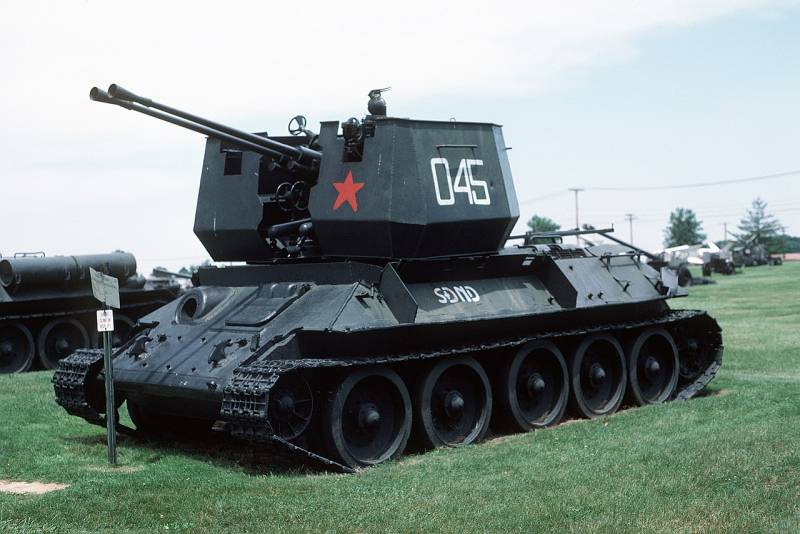
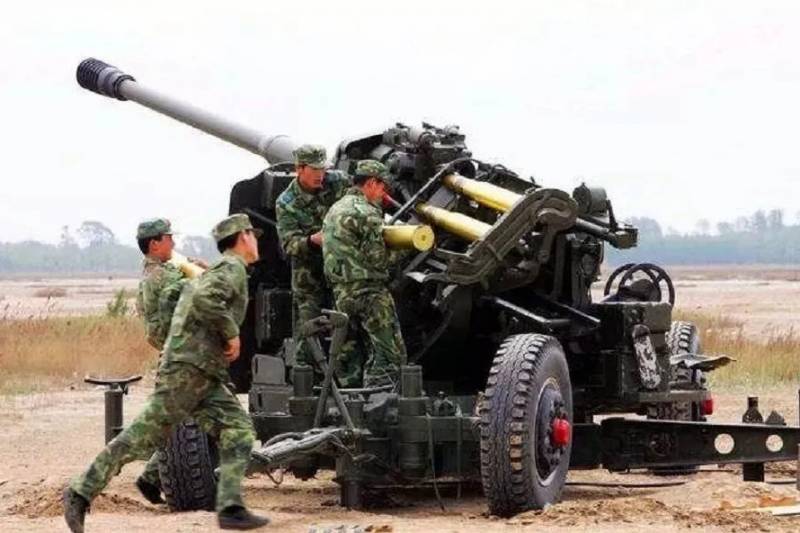
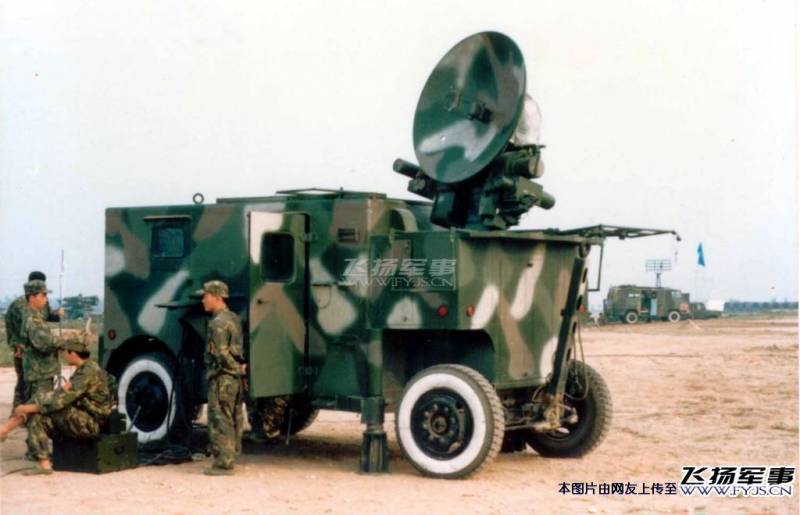
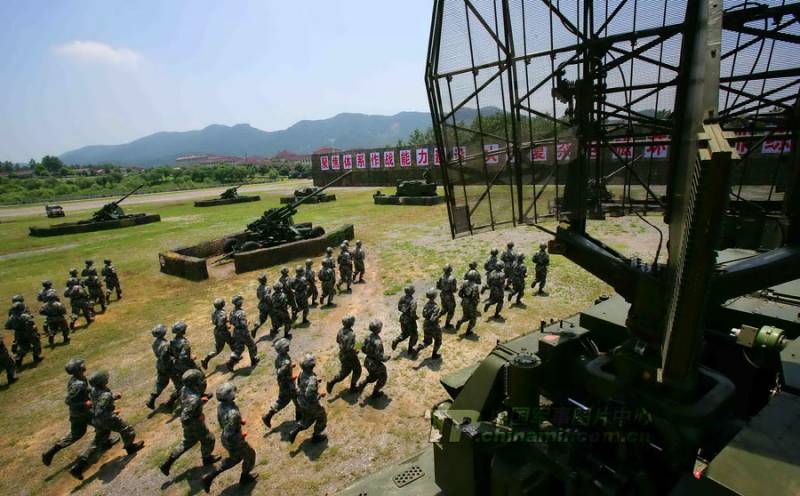
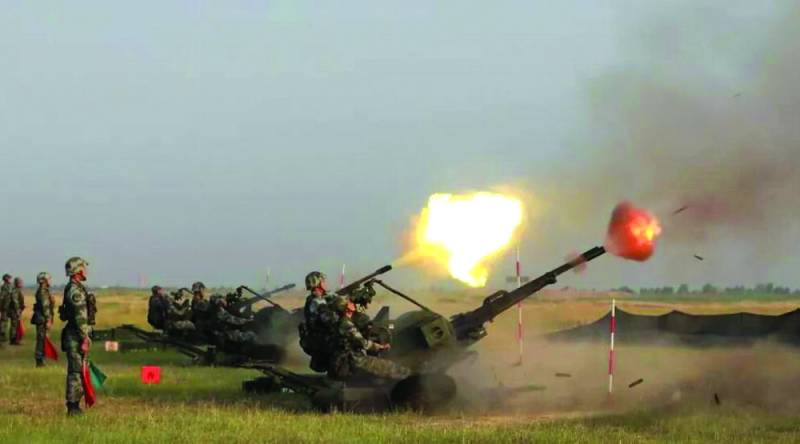
Information